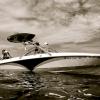
Any "Sparkies" willing to review my battery wiring diagram?
By
Mike Christie, in Centurion Boat Accessories, Electronics and Modifications

By
Mike Christie, in Centurion Boat Accessories, Electronics and Modifications
By using this site, you agree to our Terms of Use and Privacy Policy..